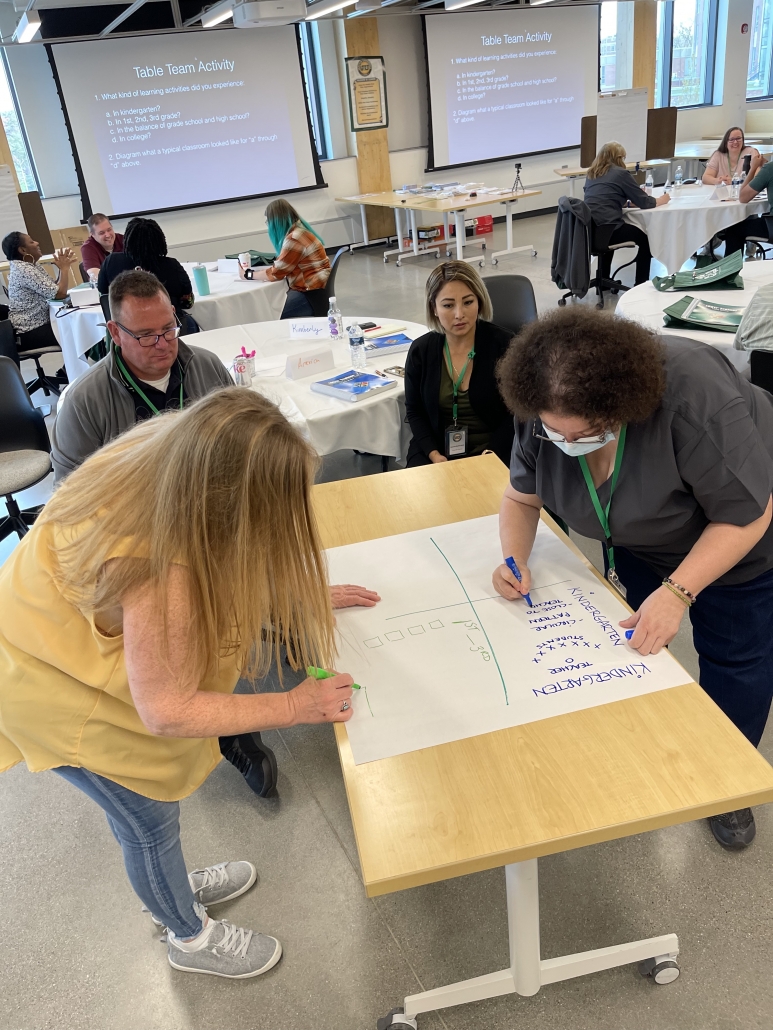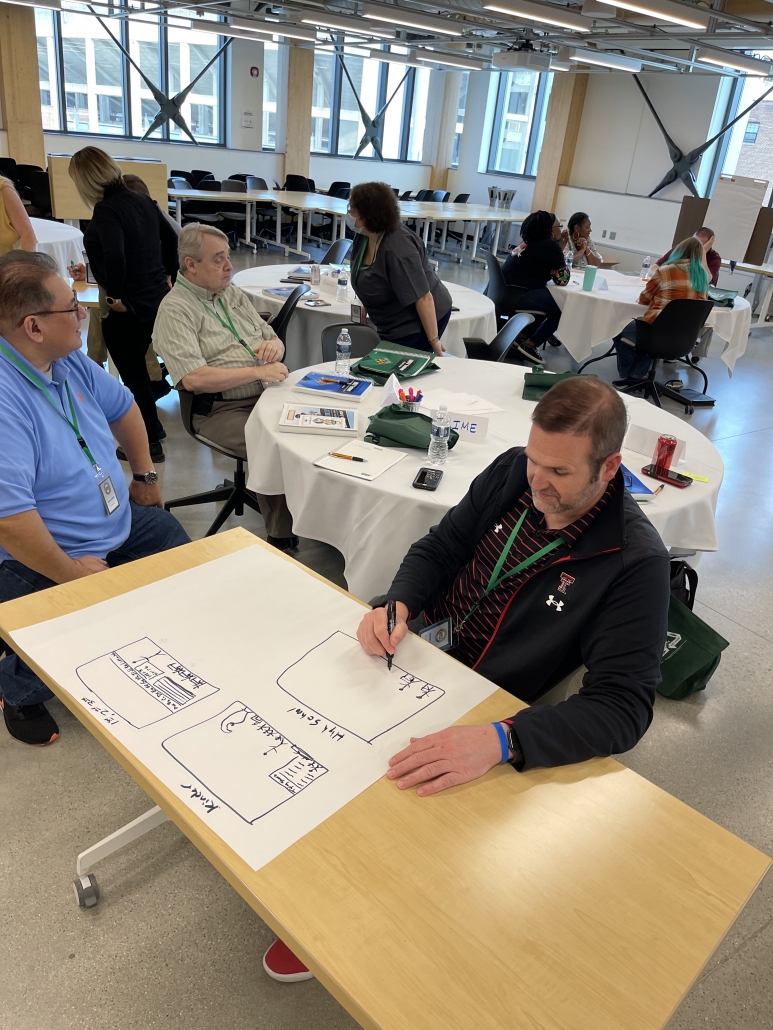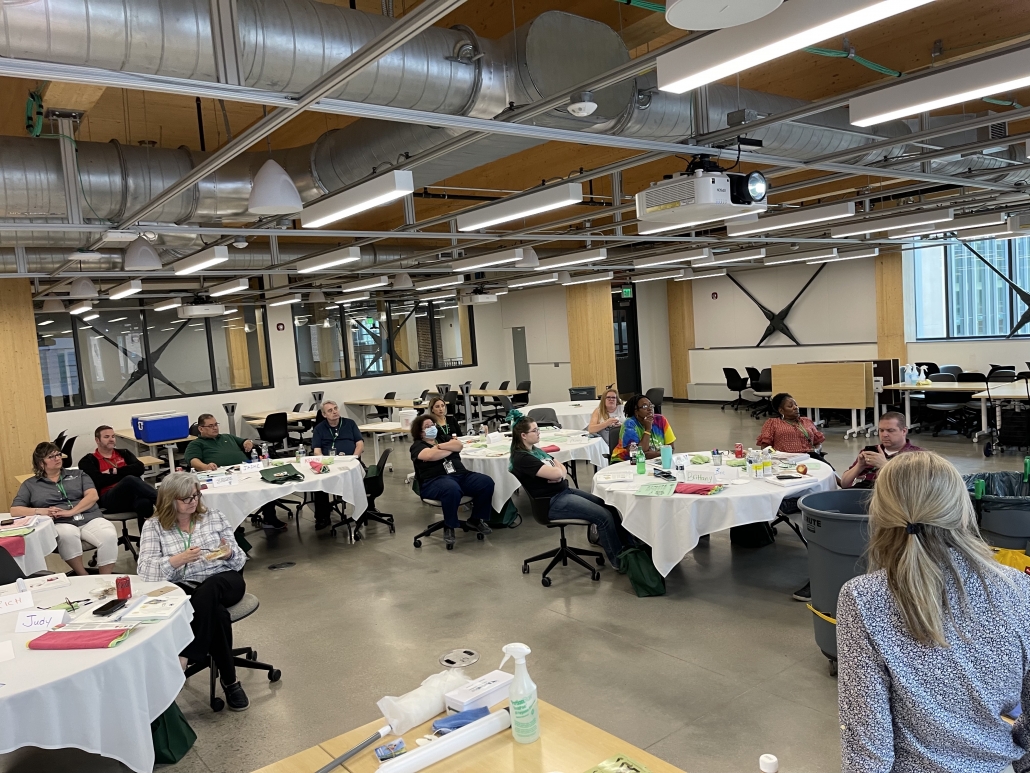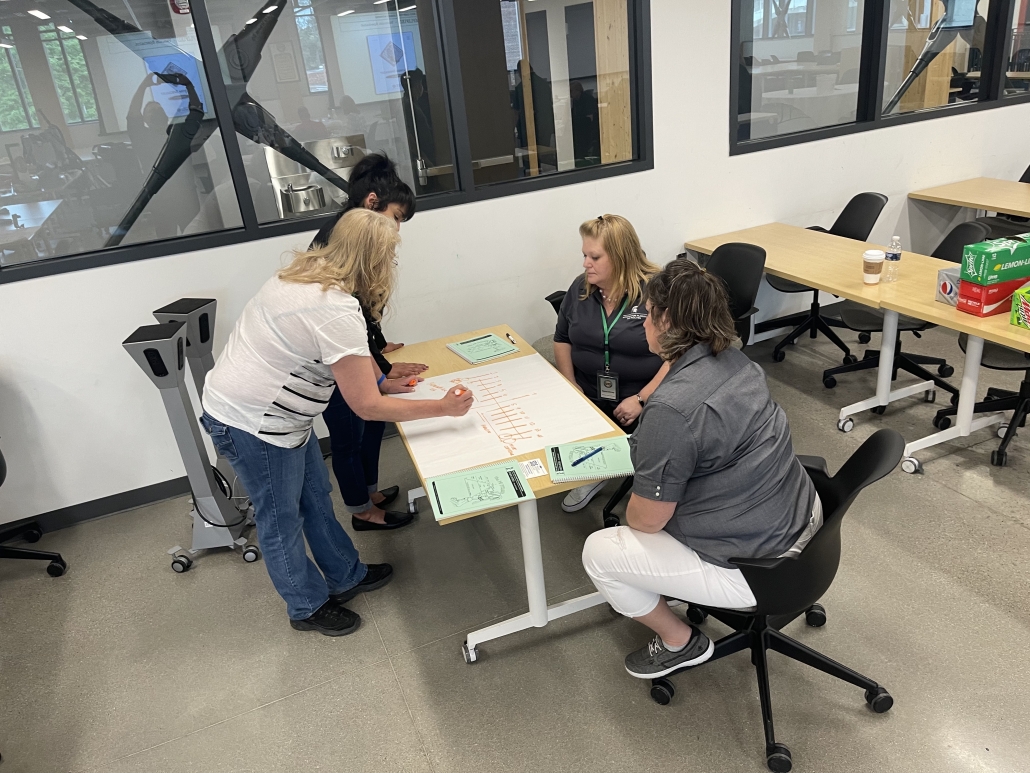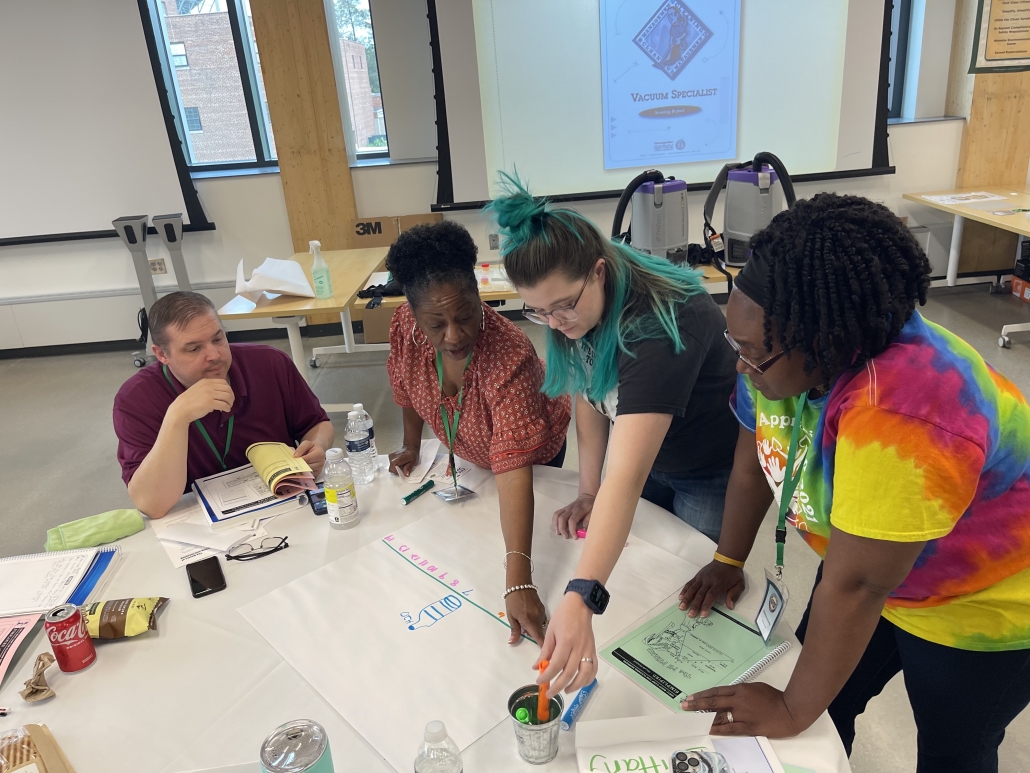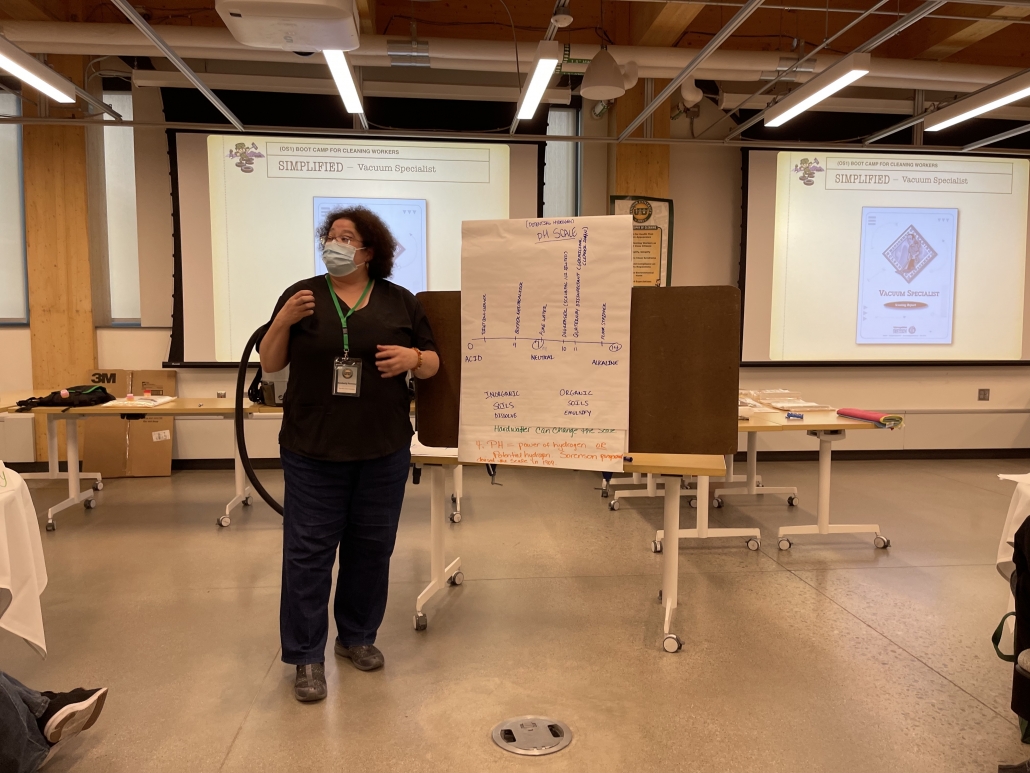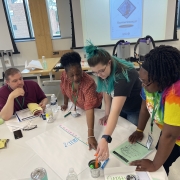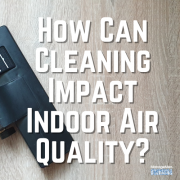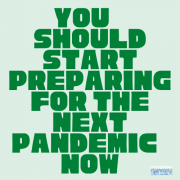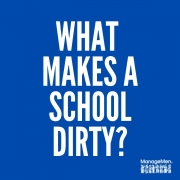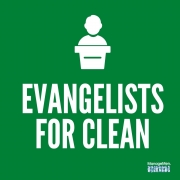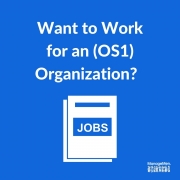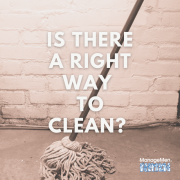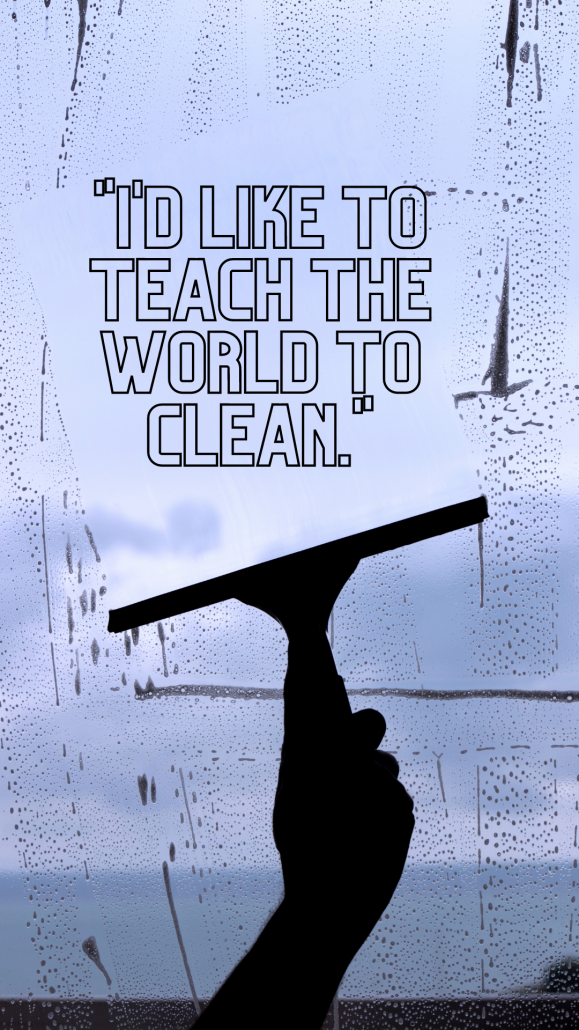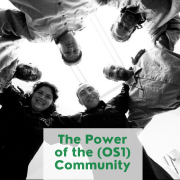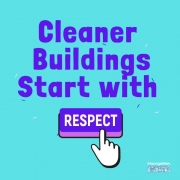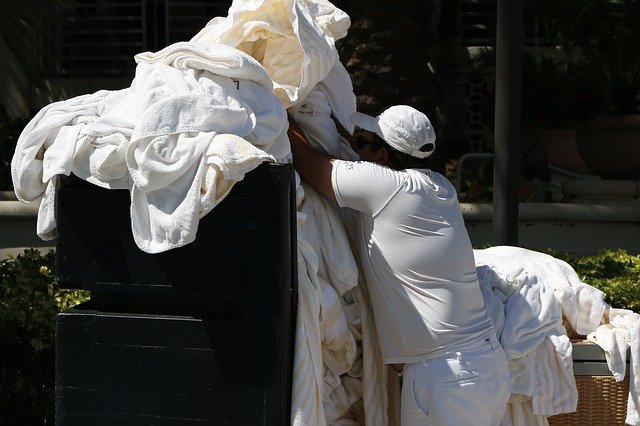Having spent most of our professional careers working with custodians, we have seen the symptoms for years. Disrespect, feelings of invisibility, low morale—cleaning workers hold one of the most critical positions in maintaining public health and safety, but because they’re paid and treated like dispensable workers, most don’t understand the value of their work.
Many of these feelings were magnified by the pandemic, and now with the current labor market and worker shortages everywhere, cleaning departments everywhere are having a hard time filling vacant positions.
In many ways, we could see it coming. Low wages, high risk for injury, long hours, little recognition—add the factor of playing Russian roulette with a case of COVID and many people tapped out.
While many industries are feeling the pinch, hospitality is taking a direct hit—particularly because many cleaning workers were laid off at the start of the pandemic. “Where are the housekeepers?” asks one USA Today headline. Due to labor shortages and apparent changes in consumer preferences, daily housekeeping will now be offered at many non-luxury hotels as an add-on service.
Citing the labor issues, Mehmet Erdem, an associate professor at the University of Nevada, Las Vegas’ college of hospitality says:
“There’s a huge shortage. … We are seeing people say that this is a transient job, it’s not a career path, I’m opting in for something else. I think it will be very normal to (not have) daily housekeeping, but you have to opt-in, you have to request it, or you ask for extra linen or towels.”
Meanwhile, in Singapore…
Last June, we came across a fascinating article about how industry leaders in Singapore are launching an effort to attract younger cleaning workers to the industry. As many younger workers opted for gig jobs, such as those offered through ride-share and food delivery services, cleaning departments suffered from staffing shortages.
“There’s a huge shortage. … We are seeing people say that this is a transient job, it’s not a career path, I’m opting in for something else. I think it will be very normal to (not have) daily housekeeping, but you have to opt-in, you have to request it, or you ask for extra linen or towels.”
Mehmet Erdem, Associate Professor at the University of Nevada, Las Vegas College of Hospitality
When asked if he would ever consider a career in the cleaning industry, a 23-year-old nursing student told the reporter, “The stereotype is that if you’re a cleaner, you have no future.”
In addition to raising wages, Environmental Management Association of Singapore (EMAS) President Tony Chooi says that changing the perception of cleaning work while mapping out career paths for cleaning workers must also be a focus:
“There are two sides to most jobs and while cleaning is not the most glamorous of industries, its nature and scope has changed through the years with exciting developments in, for example, robotics and technology,” he said.
A “Sunrise Industry”
While automation may solve some of the cleaning industry’s labor woes, the increased demand for cleaning services will only continue to grow. That’s why Chooi refers to it as a “sunrise industry”—opportunities are on the horizon if you can help workers understand that cleaning is more than a “transient job” and offer them a solid career path for advancement.
Whatever your age, background or experience level, people who stick with custodial work and do a good job can gain several skillsets that can be applied across any professional environment. Sure, while entry-level cleaning workers will likely be responsible for handling cleaning duties, supervisory positions may require knowledge of things like budgeting, purchasing, vendor negotiations and more.
The jobs aren’t solely limited to custodial work either. For in-house cleaning workers (people who are hired by a private company to handle cleaning duties, such as a housekeeper employed by Hilton) who like knowing that they play an important role in protecting the public health but enjoy sales and negotiating, they might consider working for a distributor who sells cleaning products. Many of these businesses also hire trainers to teach cleaning workers how to properly use their products.
At ManageMen, we often find some of our best consultants are people who have been responsible for a custodial operation. Now they help us go out into the field and work with other custodial departments to help them follow best practices.
Leading the Change
The Bureau of Labor Statistics projects that the employment of Janitors and cleaners is projected to grow by 4 percent from 2019 to 2029—a projection made before the pandemic. If we expect to fill these positions, we need to do a better job of attracting younger people to our industry.
As we mentioned in this post, most custodial leaders don’t have the ability to raise wages and benefits, but here are a few things they can do to attract and retain workers:
Try following the KEEP acronym:
Keep employees at the forefront. Take the time to talk to your staff members and get to know them. Listen to them and learn the names of people in their families. Ask them questions and show you’re interested in them as a person, not just as work.
Explain the importance of what they do. Help them understand the importance of their role. Make sure they know that cleaning isn’t just about helping a building look nice, but it’s about keeping people in that building stay healthy and safe too.
Empower them with training and advancement opportunities. Cleaning workers are one of the best customer service tools in your building. Empower them with training so they understand how to interact with others in the building and strategies to do their jobs better so they can be promoted and grow within their career.
Preach their importance to other people in the building. In a hospital, that might be doctors and nurses, in a school, that could be students and teachers. The key is that other people in the facility have a greater appreciation for how cleaning workers help them.
Studies routinely show that more engaged workers are higher performing. Showing workers that you truly value them will help KEEP them on your team in a competitive job market.

